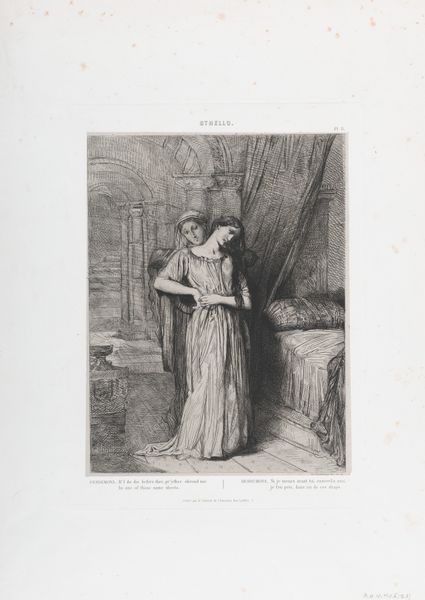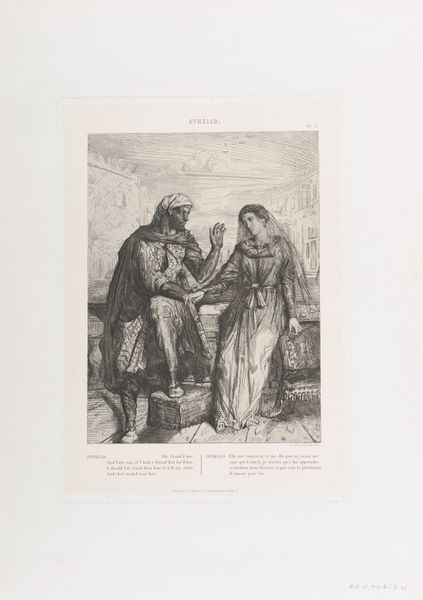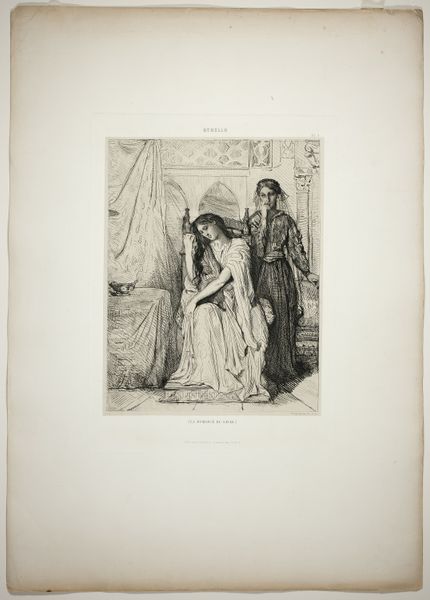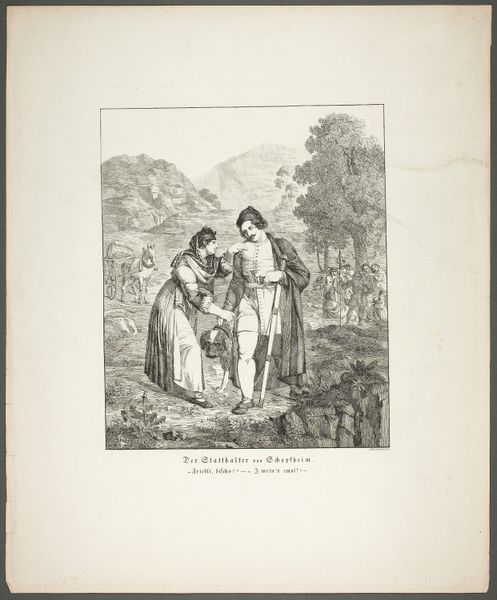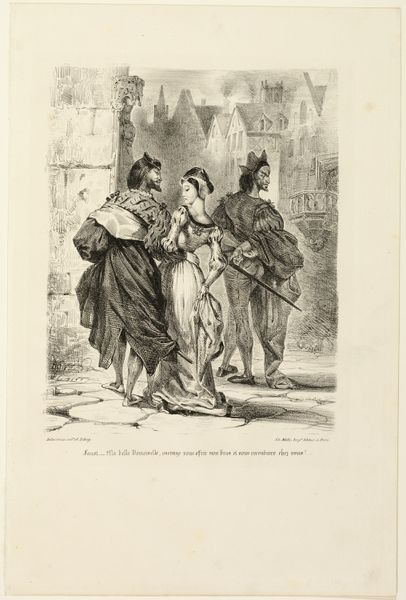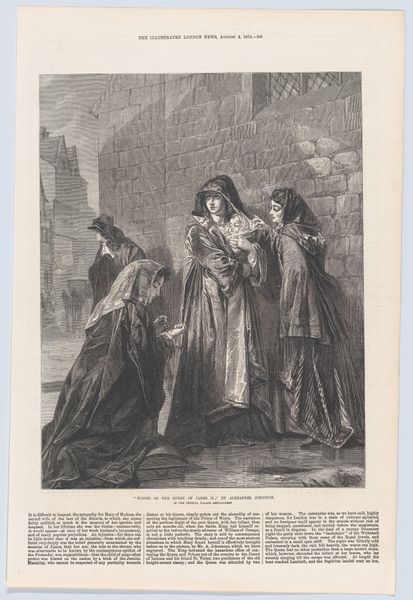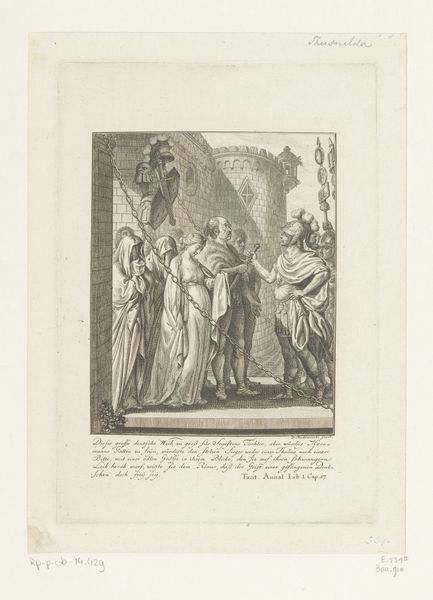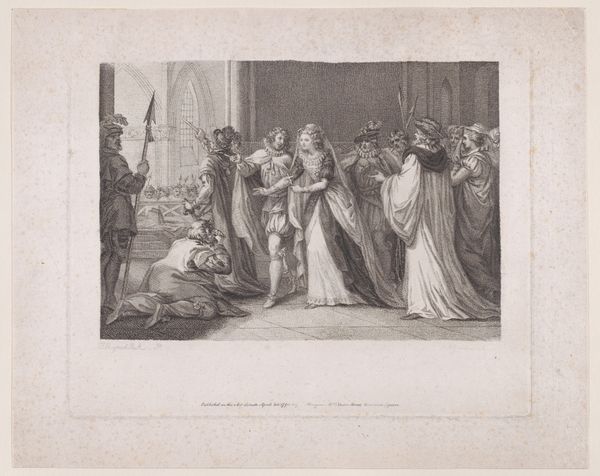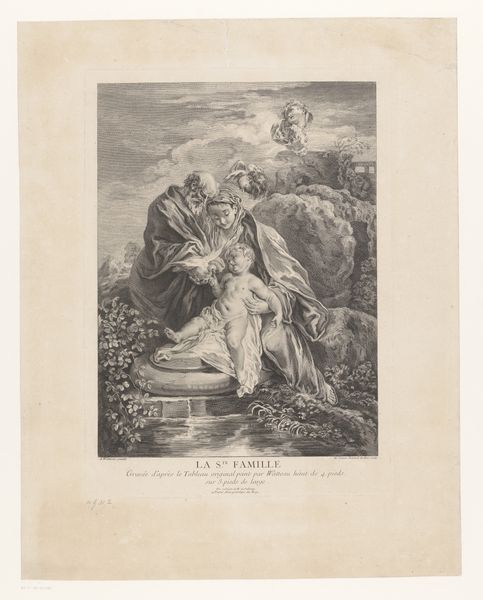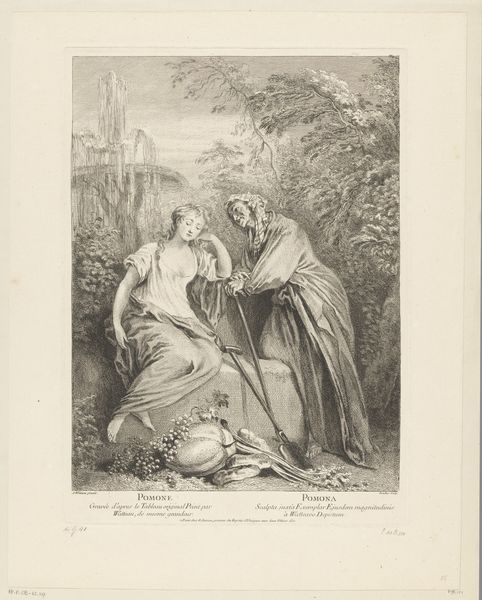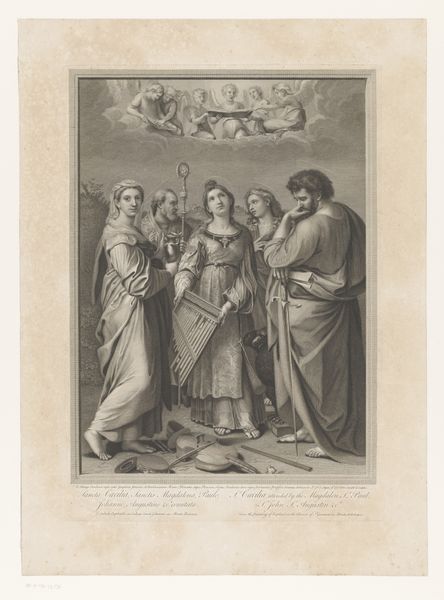
"Therefore, be merry Cassio": plate 6 from Othello (Act 3, Scene 3) 1844
0:00
0:00
drawing, print, engraving
#
drawing
#
narrative-art
# print
#
figuration
#
men
#
history-painting
#
academic-art
#
engraving
Dimensions: plate: 12 1/2 x 9 5/8 in. (31.8 x 24.5 cm) image: 10 9/16 x 8 7/16 in. (26.8 x 21.5 cm)
Copyright: Public Domain
Editor: This engraving from 1844 by Théodore Chassériau is called "Therefore, be merry Cassio" and it depicts a scene from Shakespeare's Othello. There is a feeling of intrigue, or even despair, that comes through when I see it. How do you interpret this work? Curator: The scene is ripe with tension and laden with power dynamics, isn’t it? Think about what we know of the story – Othello, a Moorish general in the Venetian army, is being manipulated by Iago. This image freezes a crucial moment of that manipulation, focusing on the white characters and suggesting where Chassériau's sympathies might lie. How does understanding that context change the way we look at Othello's absence from the scene, considering race and the construction of "otherness?" Editor: It's almost as though we are meant to assume Othello's point of view, as he spies on Cassio and Desdemona. Does the artistic style—the academic approach—further contribute to this biased viewpoint, reinforcing colonial power dynamics through the artist's choices? Curator: Precisely. Chassériau’s "academic" style, which often harkened back to idealized classical forms, in this case uses shading to hide Cassio while placing Desdemona under a much brighter light, almost idolizing her. It seems to naturalize certain hierarchical narratives that position Desdemona and perhaps European femininity generally, as innocent while demonizing others. Also consider what is outside of the light. Editor: So, it isn’t just a representation of a play, but also an active statement within a specific social and political context of 19th-century France. It's fascinating how a seemingly straightforward illustration can be so deeply implicated in issues of race and power! Curator: Indeed! The artist's decisions—composition, subject matter, style—aren't neutral. They're infused with the social biases of the time. Thinking about art through this lens opens up complex discussions. Editor: I will definitely be asking these kinds of questions moving forward. Thanks!
Comments
No comments
Be the first to comment and join the conversation on the ultimate creative platform.
